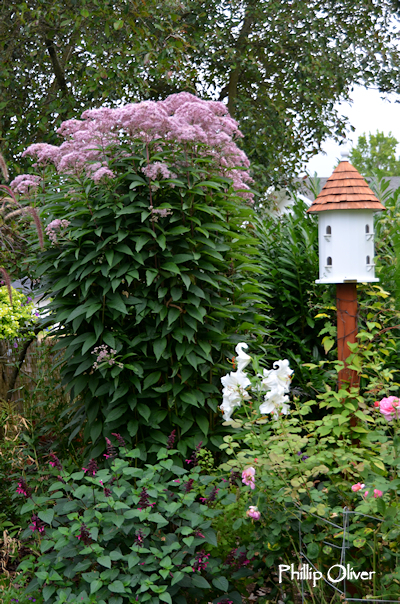Ten August Favorites
Ginger Lily ( Hedychium coccineum 'Tara') With the exception of a few hot spells, August has been tolerable. However, beginning tomorrow, we are in for a 5-day heat wave. Disgusting! August is the month for plants that really love the heat. I have to begin with the Ginger Lily 'Tara' which is blooming for the first time. I posted a few weeks ago about how excited I was to see the bloom stalk. They have slowly opened with a few flowers every day. It has been well worth the wait. Other favorites - Continuing the orange theme is Lantana 'Miss Huff' which is growing in a pot (that is the heather 'Firefly' in the foreground). This lantana can survive in the ground if situated in a protected area and it isn't too wet. Previously, one grew in the back garden along the south foundation and got huge (about 3' x 5'). I finally took it out after a particularly tough winter and it was slow to bounce back. Allium ' Millenium' is a small charme...




That's quite a dramatic difference. You are very brave. I hope it works.
ReplyDeleteI tend to do this with Aster, that often gets too tall for my liking and tend to plop over with autumn rains and winds. I remove a third off the top, and get shorter but fuller blooms.
ReplyDeleteYou must submit another photo of this eager shrub, once it starts blooming.
Asters was one of the plants that was mentioned as a good candidate.
DeleteBeautiful plant. Do you know if the cut stalks will multiply/branch off? Just this morning I cut back my returning pineapple sage, which I *love*, but it gets so leggy late in the season. I'm hoping it will not only stay neat but have more branches and flowers.
ReplyDeleteLook forward to seeing how it turns out.
ReplyDeleteI've been doing something similar this year with some of my perennials -- none that get that tall -- including some goldenrod and Coreopsis pubescens. The Coreopsis is just starting to bloom now so I'm looking forward to seeing whether I like the effect.
(I think cutting in layers or doing the Chelsea Chop can also increase the number of flowers, since often the cut stem will branch. I've done that quite successfully in the past with the 'standing cypress' wildflower, for instance.)
Aaron, yes I also sheared back my goldenrod.
DeleteYou must have the straight species. It is a beauty for sure. It will do just fine no doubt. Can't wait to see it when it blooms. I chopped my sedums due to their floppy nature. They aren't in full sun unfortunately. It isn't their fault. The chop does help.
ReplyDeleteThat is great to hear!
DeleteEither way that's a beautiful scene, with the birdhouse and the bit of natural fencing as accent to the shrubbery.
ReplyDeleteI chop asters and Autumn Joy sedum so they don't flop. I also thin asters and phlox to reduce powdery mildew.
ReplyDeleteTracy, that reminds me to do that to my sedum! Thanks
DeleteWould love to have an update! How did they do?
ReplyDelete